
- Share this page
Share this page
- EN
Select Language
- FAVORITES
- Search
Detailed search: You can do a detailed search by keyword, genre, time, area and tag.
Main content starts here.
- Visit Tokyo |
- EXPERIENCES |
- Nightlife |
- Tokyo at Night: From Beautiful Night Views to Phenomenal Nightlife
Updated: November 5, 2025
Tokyo at Night: From Beautiful Night Views to Phenomenal Nightlife
As you might expect from one of the world’s biggest and most bustling cities, Tokyo is phenomenally vibrant at night. We’ll cover the best night views, popular nightlife districts, places to drink, places to see live music, and much more. Let’s explore Tokyo at night.
Tokyo nightlife: great drinks & thrilling experiences
Tokyo's nightlife offers a wide range of experiences, from bars and casual izakayas to Michelin-starred restaurants. There are clubs playing house, techno, and hip-hop music, and venues hosting jazz, rock, blues, and punk bands. With events and parties every night of the year, Tokyo's nightlife is consistently exciting.
Popular nightlife districts
So, what areas of Tokyo have the best nightlife. Most neighborhoods of the city have great places to eat and drink until late, but the city’s most bustling night districts tend to be the city’s most bustling areas in general.
Shinjuku stays lively all night long, with a wide array of choices from the tiny bars in Shinjuku Golden Gai to the entertainment venues in Kabukicho. Shibuya is energetic and trendy, with clubs and music lounges that stay open late. Roppongi offers an international experience with English-speaking clubs and bars. And Akihabara—the heart of anime and gaming culture—has a unique nightlife infused with pop culture.
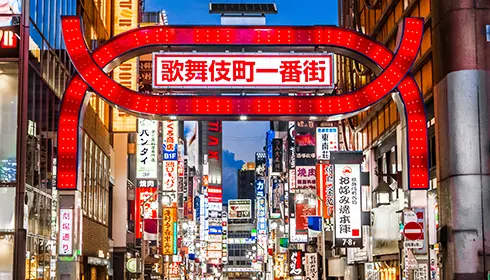 Neon signs in Kabukicho, Shinjuku
Neon signs in Kabukicho, Shinjuku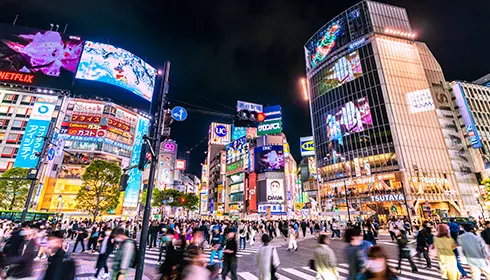 Shibuya Scramble Crossing
Shibuya Scramble Crossing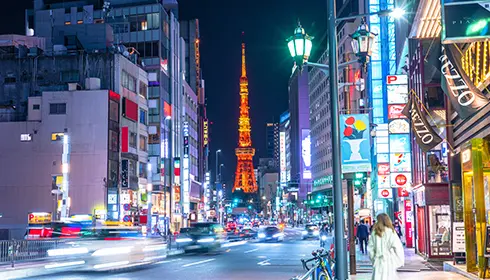 Roppongi's streetscape
Roppongi's streetscape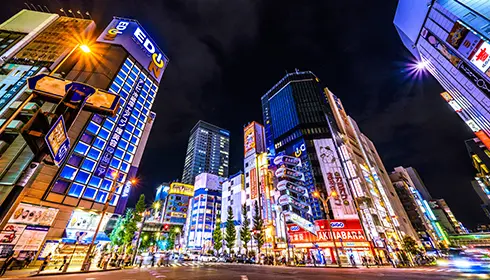 Akihabara Electric Town
Akihabara Electric Town
There are many other districts nearby, each with a unique atmosphere. Koenji, near Shinjuku, is known for DIY punk music venues and has a distinctive culture and underground nightlife. Shimokitazawa, near Shibuya, is casual and creative, with stylish bars and distinctive lounges. Shinbashi, near Roppongi, is the go-to drinking spot for office workers, with izakayas and standing bars that let you enjoy an everyday night out just like a local. And Ameyoko, in Ueno near Akihabara, is full of casual izakayas and international restaurants.
Be aware that famous tourist spots like TOKYO SKYTREE® and Asakusa don't necessarily offer food and drinks late into the night. So to enjoy Tokyo's nightlife to the full, make your way to a district with lots going on.
Bars, pubs and izakaya
Tokyo is an awesome city to go out drinking.
Make sure you spend at least part of one evening at an izakaya. The izakaya is a Japanese restaurant. It’s a place where you can enjoy a drink and small bites of food from a range of Japanese culinary styles. Izakaya are everywhere in Japan, and the standard quality of the food tends to be high, even at casual, hole-in-the-wall places.
There are also plenty of straight-up bars. Beer Club POPEYE in Ryogoku always has dozens of craft beers, so you can try something new every time you visit. There are also plenty of jazz bars with great live music.
Shinbashi and Ginza are quieter on the weekends, but during the week they attract a lively afterwork crowd that flows into the hundreds of buildings stacked tall with izakaya. For the late-night weekend scene, Shinjuku, Shibuya and Roppongi are good bets.
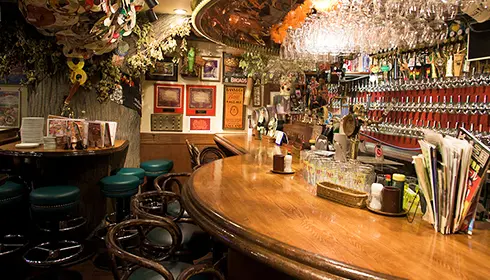 Popeye
PopeyeCourtesy of Shuhei Haruta
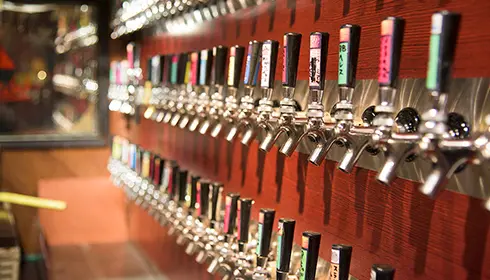 Popeye
PopeyeCourtesy of Shuhei Haruta
Clubs in Tokyo
Going to a club for music can mean different things to different people…but whatever your taste, Tokyo has you covered.
Tokyo has more jazz clubs than anywhere else in Japan. Shinjuku's famous Pit Inn was established in 1965 and has always been at the forefront of Japan's jazz scene. Marunouchi's Cotton Club offers food and jazz in a sophisticated atmosphere. Blue Note Tokyo, the local branch of the world-famous chain, is in Aoyama, near Shibuya. Popular record bars include City Country City in Shimokitazawa.
Harlem in Shibuya is probably one of the most prominent hip-hop clubs in Japan. And if you’re interested in music bars that lean more toward house and techno, try Oath in Shibuya. Both are open until the early hours of the morning. These are just a small sampling of the nightclubs and live music clubs that Tokyo has to offer.
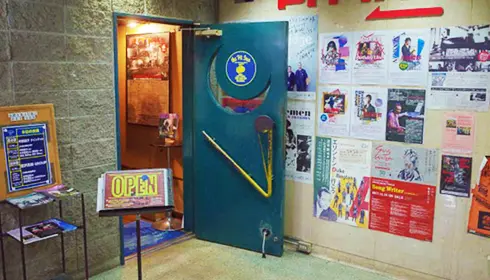 Pit Inn
Pit Inn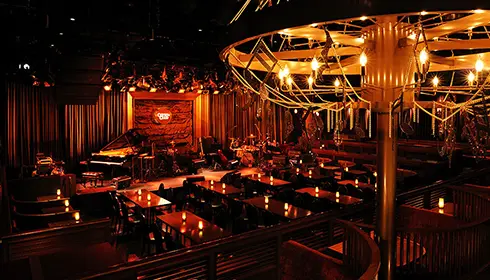 Cotton Club
Cotton Club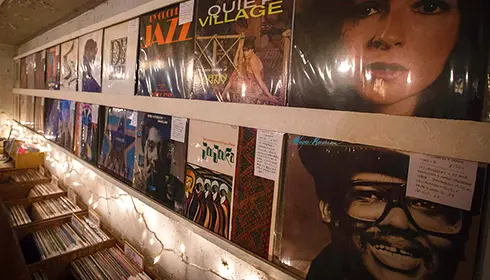 City Country City
City Country City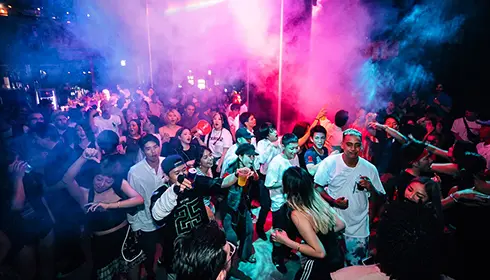 Harlem
Harlem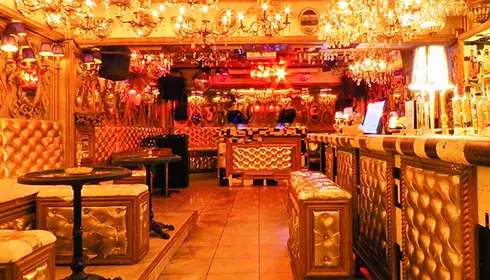 Oath
Oath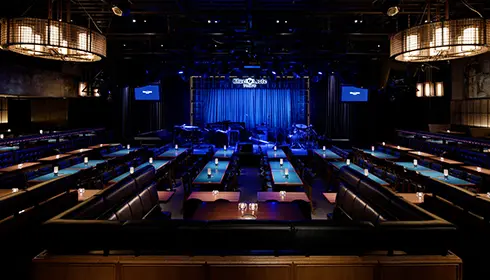 Blue Note Tokyo
Blue Note TokyoSeek out some great yokocho (night markets, Tokyo-style)
Tokyo doesn’t have too many night markets of the kind you might find in other big Asian cities, though it has a wide range of yokocho (alleys) filled with casual yatai (stalls) selling all sorts of great food and drinks. Many are located under or beside the train tracks, and their charming retro atmosphere is intoxicating.
Ameyoko Shopping Street (aka Ameyoko), in Ueno, does stay open late. Other great options include Shinjuku Golden Gai and Omoide Yokocho in Shinjuku, Nonbei Yokocho (Drunkard’s Alley) in Shibuya, Ebisu Yokocho in Ebisu, and Suzunari Yokocho in Shimokitazawa.
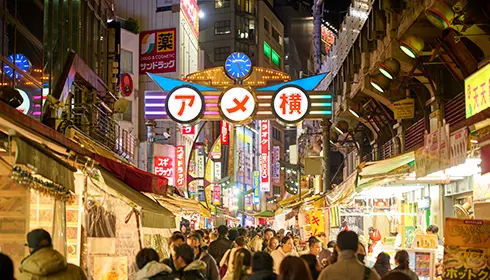 Ameyoko Shopping Street in Ueno
Ameyoko Shopping Street in Ueno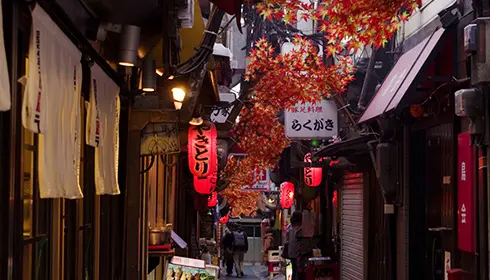 Omoide Yokocho
Omoide Yokocho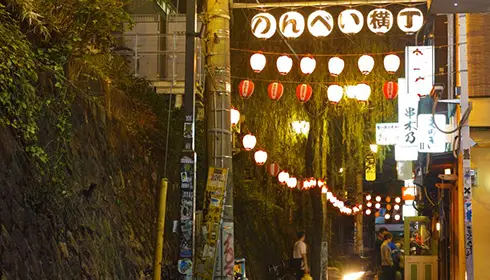 Nonbei Yokocho in Shibuya
Nonbei Yokocho in Shibuya Ebisu Yokocho
Ebisu YokochoTokyo night views
Tokyo at night is the perfect place to see beautiful skylines and iconic nighttime views. The landscape is a vast sea of lights that serves as the wallpapers of countless computers.
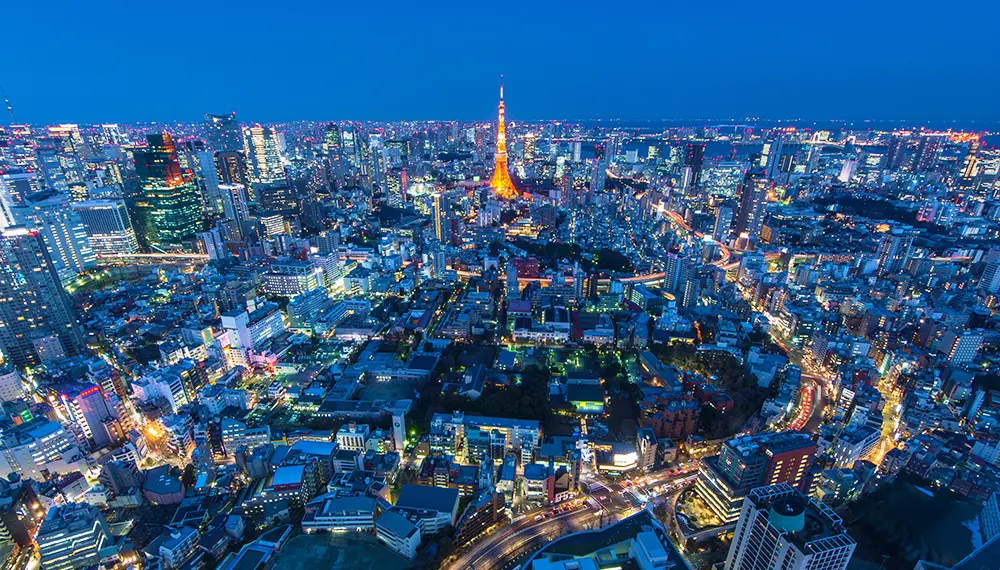
Best views of the Tokyo skyline at night
If you want to catch a sweeping view of the Tokyo night skyline, one good option is to go up. In highrise-heavy districts like Shinjuku and Shibuya, there are plenty of bars and restaurants situated near the tops of buildings where you can gaze out on the urban expanse. There are also dedicated observation decks, such as SHIBUYA SKY, or the observatory at the Tokyo Metropolitan Government No. 1 building. And you might already know about New York Bar on the 52nd floor of Park Hyatt Tokyo, which was made globally famous by the movie Lost in Translation.
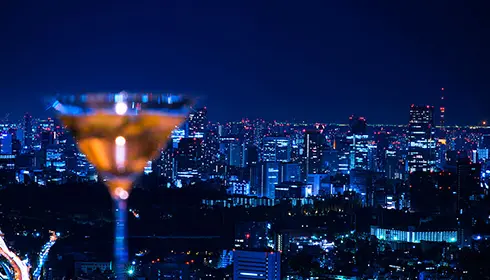 Courtesy of New York Bar, Park Hyatt Tokyo
Courtesy of New York Bar, Park Hyatt Tokyo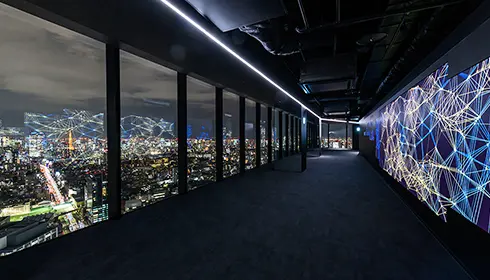
Alternatively, you could hop on a nighttime cruise in Tokyo Bay or around the rivers of Tokyo, taking in Rainbow Bridge and Odaiba.
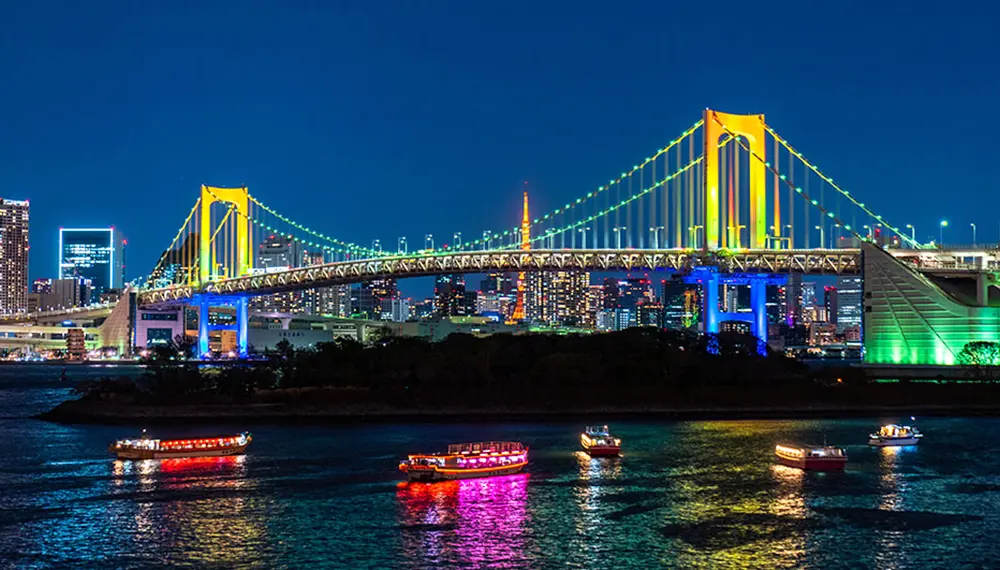
Rainbow Bridge and yakatabune pleasure boats, viewed from Odaiba
Check out the neon lights
A crowded street filled with bright neon signs and lights—it’s a quintessential Tokyo scene. Maybe you even have one of these images as your computer wallpaper or phone background right now. Where should you go to see it for yourself. Try Center-gai in Shibuya, across the famous Shibuya Scramble from Shibuya Station’s main building. Or stroll through Kabukicho in Shinjuku. Or walk down the main avenues of Akihabara or Ginza. Or head to a yokocho (like Shinjuku Golden Gai or Nonbei Yokocho). The list is practically endless.
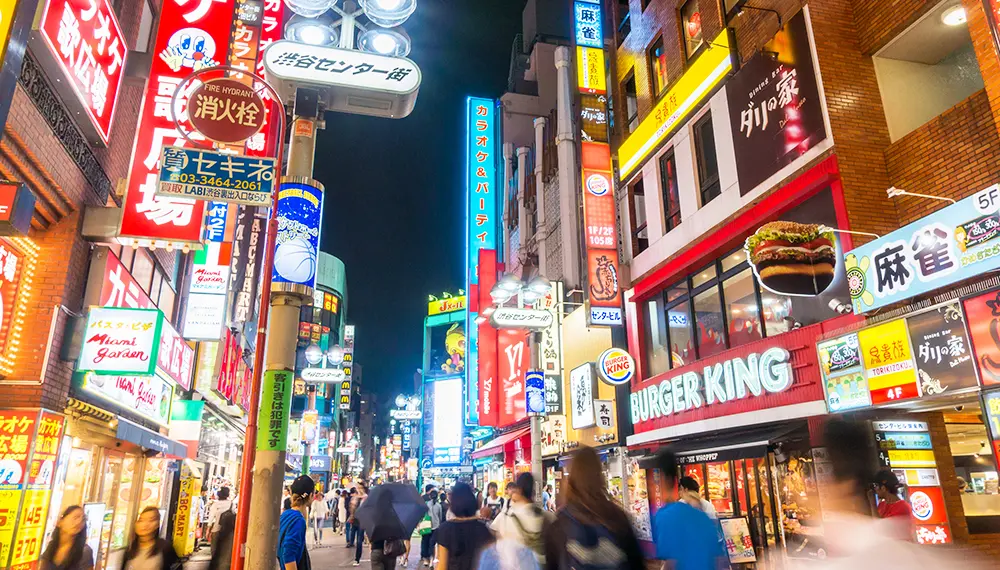
Shibuya Center-Gai
Winter holiday lights across the city
During the holiday season, Tokyo takes its lights displays/illuminations very seriously. Beautiful light displays put on each year include the Roppongi Hills Keyakizaka Illumination and Marunouchi Illumination. Many of the city's main streets are decorated with vivid Christmas lights, and walking along these tree-lined boulevards is sure to be a mesmerizing experience.
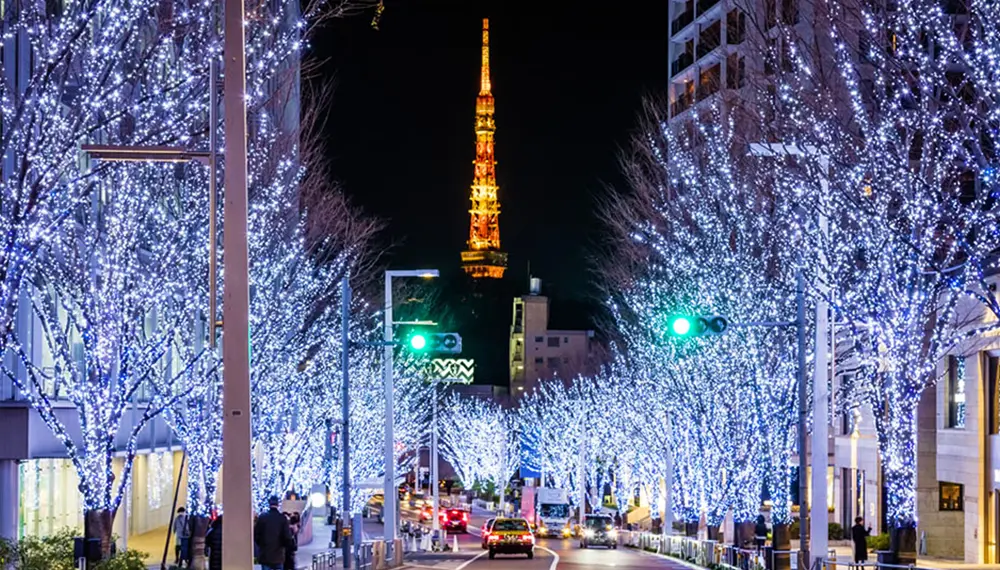
Illuminations at Keyakizaka in Roppongi
Great spots for night photography in Tokyo
If you’re keen to get some great shots of Tokyo at night, we’ve already covered some highlights (neon streetscapes, sweeping skylines), but also consider a temple or shrine: Kanda Myojin Shrine and Hanazono Jinja Shrine are good options. Many shrines and temples keep their grounds open at night and light up their temple buildings in beautiful ways. If you want a shot with the iconic Tokyo Tower, you could head to Zojoji Temple.
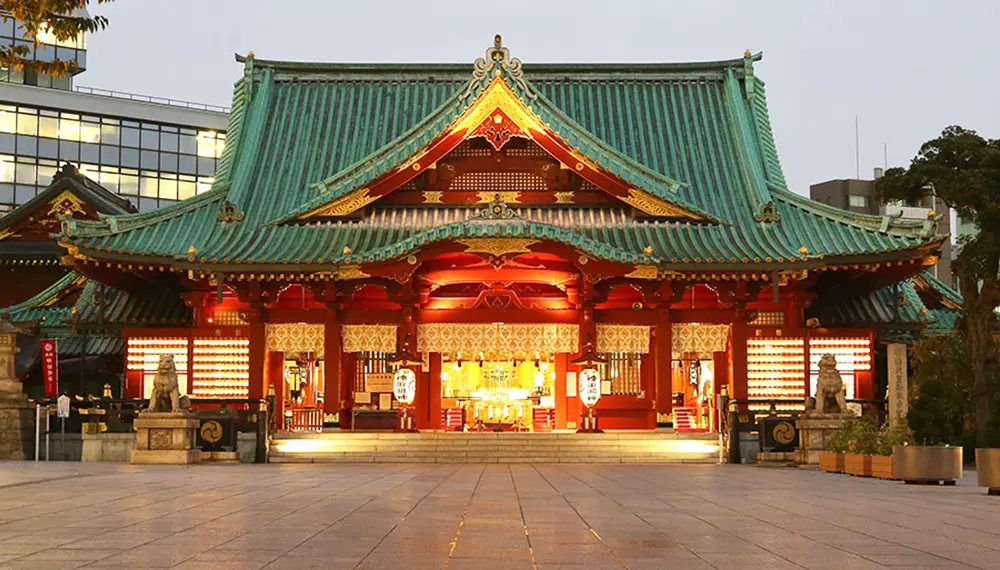
Kanda Myojin Shrine
Keep exploring Tokyo after dark: from night walks to night drives
Tokyo is known for being relatively safe at night. One advantage of this is that you can explore the streets at night without worrying. Try strolling through the area you're staying in or visiting famous tourist spots. You could even take a nighttime drive.
Night walks
One nice idea is to stroll along the banks of Tokyo’s rivers. An example would be the Meguro River near Naka-Meguro. Its banks are lined with cherry trees, so it is particularly beautiful during cherry blossom season in spring. Tokyo has lots of places where you can enjoy cherry blossoms at night, but be aware that they can become crowded. Two other great ideas: Asakusa to TOKYO SKYTREE, or Odaiba across the Rainbow Bridge to Tokyo Tower.
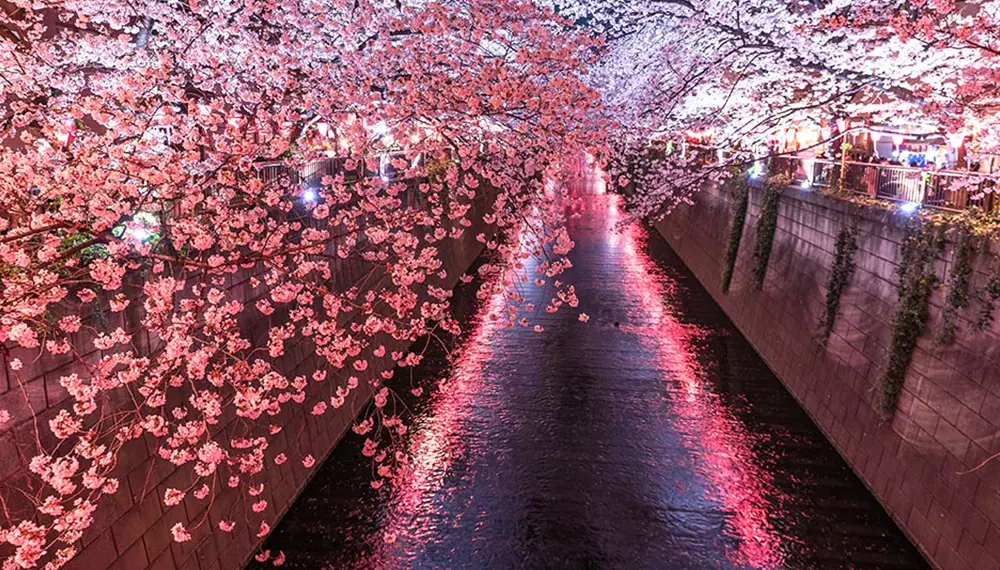
Meguro River, a famous place to see cherry blossoms in Tokyo
Night drives
If you have a car, then consider a leisurely night drive. One adventure that’s popular among locals is to drive from central Tokyo to the neighboring city of Yokohama. You’ll get some spectacular views of Yokohama Bay. If you’re cruising in the center of Tokyo, drive the Uchibori-dori, which passes by the Imperial Palace.
If you don’t have a car, another option is to board the JR Yamanote Line, which loops around central Tokyo, peering out the window as the skyscrapers swoop by.
Tokyo night tours
If you want to explore Tokyo by night, but you’re looking for a more guided experience, not to worry. There’s a tour for practically everything.
Tour buses with open roofs do night tours, and tour boats ply Tokyo Bay each evening. If you want to go on foot, you can also join up with a guided pub crawl. Other tours offer a mix of what we’ve talked about in the previous sections, making for a comprehensive look at downtown Tokyo at night: good food & drinks, neon lights, shrines and temples after dark, and bustling streets and yokocho.